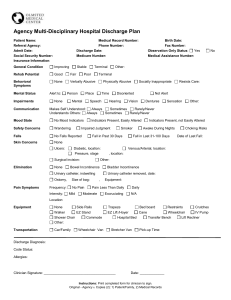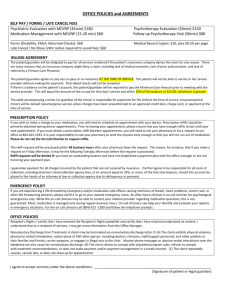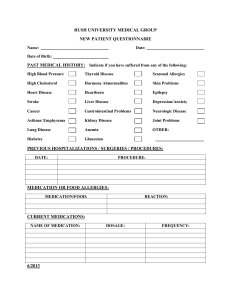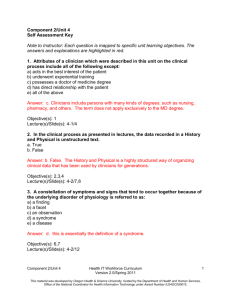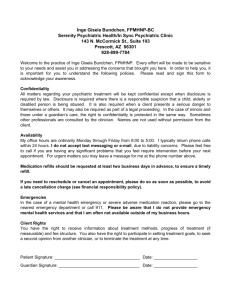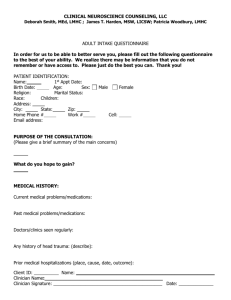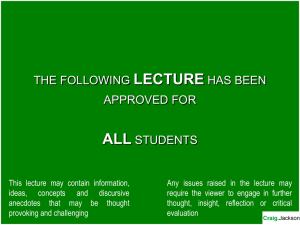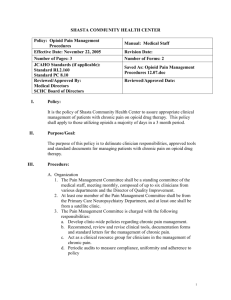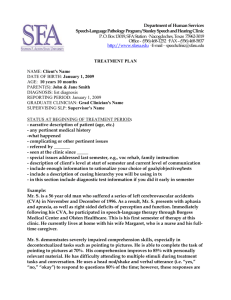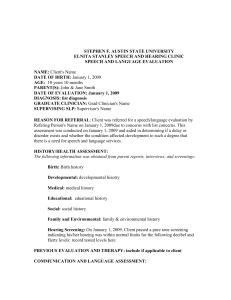DIRECTIONS: Circle the letter of the best answers for the questions
advertisement
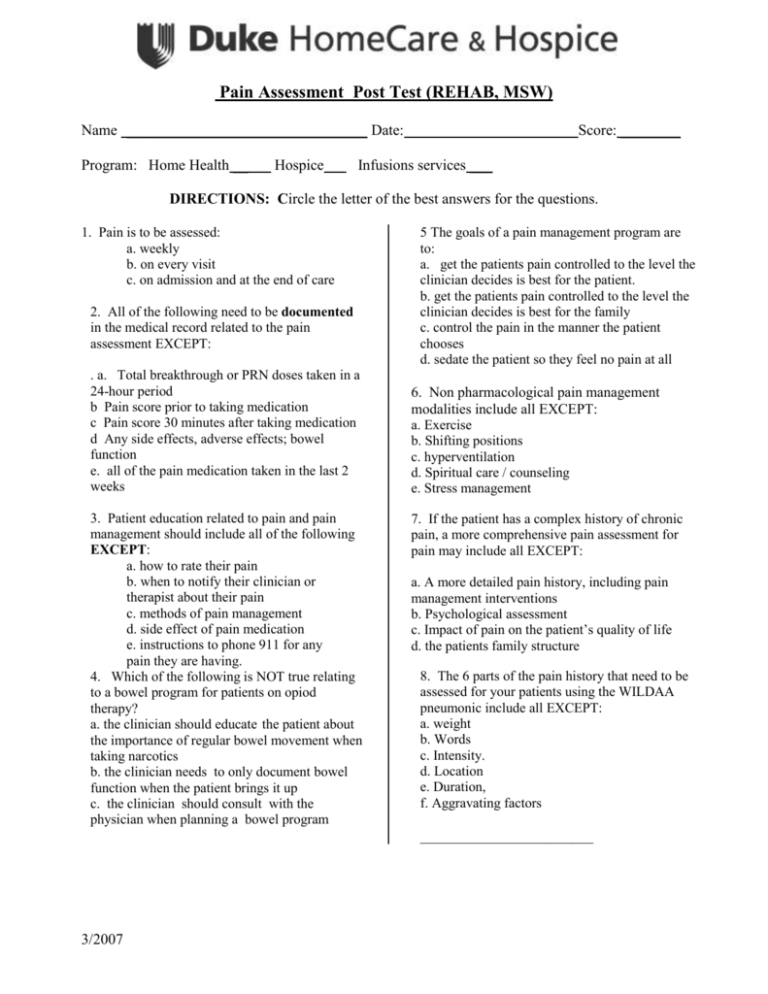
Pain Assessment Post Test (REHAB, MSW) Name ________________________________ Date: Program: Home Health __ Hospice Score: ________ Infusions services ___ DIRECTIONS: Circle the letter of the best answers for the questions. 1. Pain is to be assessed: a. weekly b. on every visit c. on admission and at the end of care 2. All of the following need to be documented in the medical record related to the pain assessment EXCEPT: . a. Total breakthrough or PRN doses taken in a 24-hour period b Pain score prior to taking medication c Pain score 30 minutes after taking medication d Any side effects, adverse effects; bowel function e. all of the pain medication taken in the last 2 weeks 3. Patient education related to pain and pain management should include all of the following EXCEPT: a. how to rate their pain b. when to notify their clinician or therapist about their pain c. methods of pain management d. side effect of pain medication e. instructions to phone 911 for any pain they are having. 4. Which of the following is NOT true relating to a bowel program for patients on opiod therapy? a. the clinician should educate the patient about the importance of regular bowel movement when taking narcotics b. the clinician needs to only document bowel function when the patient brings it up c. the clinician should consult with the physician when planning a bowel program 5 The goals of a pain management program are to: a. get the patients pain controlled to the level the clinician decides is best for the patient. b. get the patients pain controlled to the level the clinician decides is best for the family c. control the pain in the manner the patient chooses d. sedate the patient so they feel no pain at all 6. Non pharmacological pain management modalities include all EXCEPT: a. Exercise b. Shifting positions c. hyperventilation d. Spiritual care / counseling e. Stress management 7. If the patient has a complex history of chronic pain, a more comprehensive pain assessment for pain may include all EXCEPT: a. A more detailed pain history, including pain management interventions b. Psychological assessment c. Impact of pain on the patient’s quality of life d. the patients family structure 8. The 6 parts of the pain history that need to be assessed for your patients using the WILDAA pneumonic include all EXCEPT: a. weight b. Words c. Intensity. d. Location e. Duration, f. Aggravating factors ________________________ 3/2007 Answer Key: 1. b 2. e 3. e 4. b 5. c 6. c 7. d 8. a 3/2007
